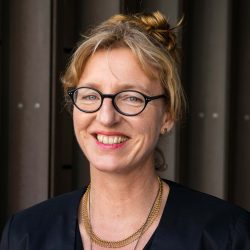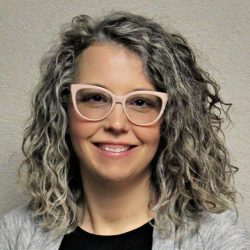
testikuva
Generic numeracy training is rarely interesting or helpful for most adults, researchers claim. Instead, adult education should help people to critically evaluate the structures behind our data-driven world.
The definition of numeracy – the ability to handle and use numerical information and data in practice – may seem relatively clear to most of us.
Numeracy is mathematics translated into real-life and everyday situations.
And yet, as Professor Anke Grotlüschen points out, one of the biggest challenges in numeracy education is that our understanding of numeracy is often very different from what everyday numeracy actually entails: things such as estimating how far you can drive before your petrol runs out, rules of thumb used in cookery or interpreting the doctor’s prescriptions.
Everyone should understand that the new gold is not language or literacy but data.
Grotlüschen is a professor of lifelong learning at Hamburg University and has, among other things, studied the intersection of numeracy, adult education and vulnerability.
Her interest in numeracy was driven by Jean Lave, a social anthropologist who developed her theory of situated learning in the 1980s. Lave found that adults who might be perfectly able to complete numeracy tasks at a supermarket could fail when being asked to perform the exact same tasks in a test setting.
“This is to do with the invisibility of numeracy. Compared to literacy, for example, there is very little research into what numeracy means in practice and how society is shaping the needs around it,” Grotlüschen says.

Professor Anke Grotlüschen. Photo credit: UHH/Ohme
Particularly the rise of new technology and digitalisation mean that a lot of the numeracy we encounter “disappears” into technology. We calculate with our phones and are used to direct debit – but this does not mean there is less numeracy.
In fact, numbers rule our life more than ever before, Grotlüschen argues.
An important example of today’s numeracy needs, she says, is the ability to process and critically evaluate the data we constantly consume in the form of news articles, graphs and other content.
We also need numeracy to understand how and why data is being collected from us and used for political and commercial purposes.
“For example, health insurance companies might be encouraging customers to measure everything with a smart watch but could also use this data to make your insurance more expensive for you. Everyone should understand that the new gold is not language or literacy but data,”Grotlüschen says.
Numeracy far from universal
Keiko Yasukawa is a lecturer at the School of International Studies and Education at the University of Technology Sydney and specialises in adult literacy and numeracy policies and practices.
She also emphasizes the fact that societal changes such as the emergence of big data and “surveillance capitalism” – the commodification of our personal data ‒ are drastically affecting the concept of numeracy skills.
Another example of a megatrend affecting numeracy is climate change, which is also generating completely new numeracy needs.
“In Australia, the air quality is already so bad at times that people are advised to stay at home. So, we need to learn to check not just the air temperature but other things as well such as air quality indicators,” she explains.
Although many of these changes happen on a global level, Yasukawa continues, it is important to remember that numeracy practices are always dependent on their specific local context.
“This is contrary to what we are taught in school, which is that maths is a universal language that you can apply anywhere,” she says.

Lecturer Keiko Yasukuwa. Photo Credit: University of Technology Sydney
Like most people interviewed for this feature, Keiko Yasukawa originally studied pure mathematics. It was only after finishing her PhD in the subject that she started to think about maths in relation to the surrounding world.
She became a teacher at a faculty of engineering and quickly realised that engineers solved mathematical problems in a way that was completely different to what she had been taught. It started to seem as if maths was not that ‘pure’ or ‘universal’ after all.
Now, in her own research, Yasukawa studies the numeracy contexts of specific communities or situations. An example could be the numeracy practices of a certain workplace.
“Several aspects contribute to the numeracy needs of a job. In addition to the technical demands of the job, these might include more subjectively experienced factors such as time pressure, values and aesthetics, for example. It is therefore not very meaningful to say that these are the numeracy skills people need to learn for work unless we understand the specific nature of that job,” she argues.
Adults are not interested in going to a workshop to improve their numeracy.
On the same principle, Yasukawa questions the rising popularity of large-scale assessments such as the PIAAC (Survey of Adult Skills). Instead, she calls for more resources for deeper analysis of how numeracy works in specific contexts and situations.
“In Australia, for example, the PIAAC results have been reported to suggest that 50 percent of the adult population is innumerate. But what does that actually mean? It doesn’t say much about how numeracy works for individuals or what we can do to improve it.”
More space for critical numeracy
How should all this be reflected in adult education policies and pedagogy?
Keiko Yasukawa’s argument is clear: a one-size-fits-all type of numeracy education might seem economically sensible at first but, if it does not meet anyone’s needs properly, it is not efficient.
It is a shame, she thinks, that adult education, originally developed to respond flexibly to adults’ individual needs, has been reduced to ‘skills training’. Generic numeracy skills training, in her opinion, is not only ineffective – it is also rarely genuinely interesting to people.
Anke Grotlüschen also favours an education approach that better incorporates individual and shifting numeracy needs.
“Adults are not interested in going to a workshop to improve their numeracy. But if you organise a workshop about how algorithms work and affect our lives, that is interesting!”
People often teach the way they were taught, which is not necessarily the best way.
More than anything, both Grotlüschen and Yasukawa would like to see numeracy more embedded into critical adult education. Rather than teaching people simply to navigate in the data-driven world, numeracy education should be about teaching people to critically evaluate the structures behind it, they believe.
“Numeracy can’t just be about adapting to what exists. It should also be about how the situation can be changed,” says Anke Grotlüschen.
Keiko Yasukawa shares an example from her own research: In Australia, banks wanted to teach saving and budgeting skills to adults from deprived socio-economic backgrounds.
“But people felt they had no need for these skills because they had no spare money anyway. It was more important to learn how not to have to rely on payday lenders.”
Sharing vulnerabilities and tools
Someone who knows very well the challenge of bridging the gap between maths and everyday numeracy is Brooke Istas, an adult maths instructor from Arkansas City in the United States.
She has been working with adult numeracy for 15 years and was awarded the Coalition on Adult Basic Education (COABE) Incentive Grant in 2020. A big part of the job, Istas says, is dealing with people’s traumas about maths – an anxiety stemming from negative experiences with the subject.
“How to overcome the anxiety and low self-esteem around maths is a huge question. I try to help my students to understand that it’s OK to make mistakes and that you can learn from them.”

Adult maths instructor Brooke Istas. Photo credit: Brooke Istas
Istas makes a point of sharing her own vulnerabilities with her students. She is very open about her “bad days” with maths or about the fact that she is not particularly quick at calculating and had to retake some maths classes in college.
Her experience of the adult education field in the United States is that numeracy is still often an “afterthought” – someone gets hired to teach literacy and then they might be asked to do numeracy on the side.
“People also often teach the way they were taught, which is not necessarily the best way. We definitely need more resources for understanding different ways of learning and different ways of contextualising algebra,” she says.
Contextualising and situating maths in everyday life – the essence of numeracy – is something Brooke Istas feels passionately about. Developing new methods and tools to illuminate the importance of numeracy for her students is always exciting, she says.
This could mean looking at algebra as patterns or going through recipes as examples of using fractions in everyday life.
Istas says that, recently, she has been finding it increasingly important to also cover examples of how data can be used and presented to us in public forums.
She often asks people to bring in statistics or graphics they have encountered, and the class examines them together.
“I always encourage my students to ask what the story is behind these graphs, and why they have been produced. My motto is that, whatever you say about data, I can say the opposite – it’s all about out how you situate it.”
Authors








